Anchor bolts with ring and hook
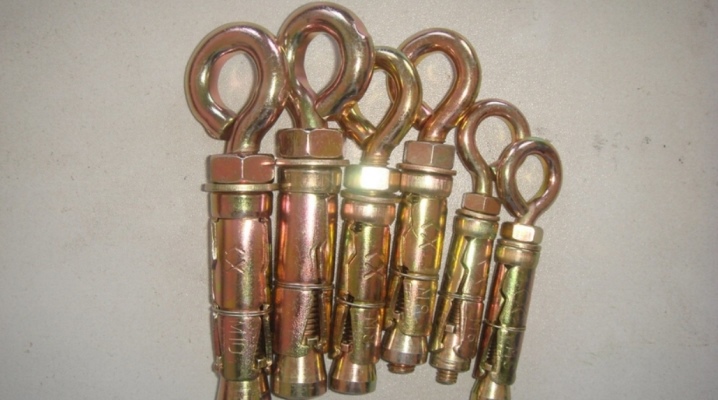
Anchor bolt is a reinforced fastener that has found the widest application in those types of installation where high static and dynamic forces are required. In this article, we will focus on anchoring with a hook or ring.
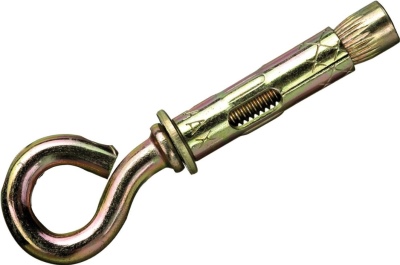
Features and scope
Fasteners in wood structures have never been difficult. Even a simple nail is quite suitable for this, let alone a fastener that has a screw thread - screws or self-tapping screws do an excellent job with fasteners in wood. Can be fastened to wood and fasteners with hooks or rings. In this case, the reliability of the fastening will directly depend on the thickness and quality of the wooden structure in which the fastener is carried out.
The main elements of the anchor mechanism, which ripples the anchor fastener in the drilled hole, are a metal sleeve-sleeve with slots dividing it into two or more petals, and a cone nut, which, being screwed onto a rotating pin, opens the petals, which, in fact, holds the fasteners. This simple scheme is successfully used for concrete or solid bricks.
For hollow and hollow material, an anchor with two or more sleeves can be used, forming several anchorage zones, significantly increasing its reliability.
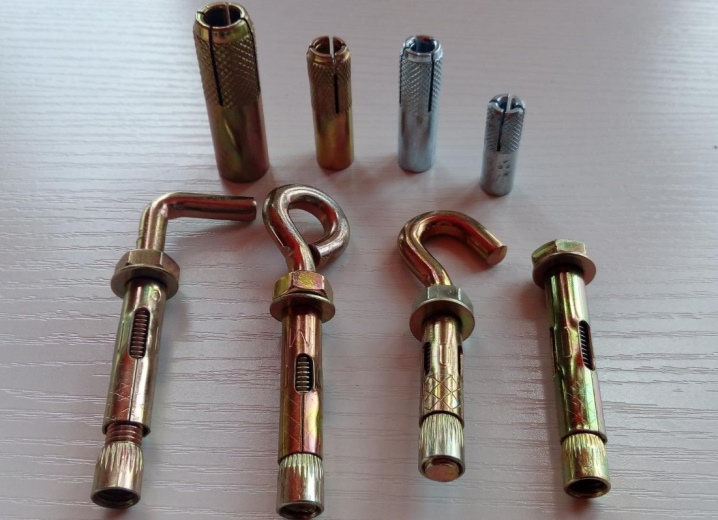
Why do you need such a clever fastener when there are cheaper screws and dowels? Yes indeed, in some cases, fastening with a self-tapping screw and a plastic dowel is quite justified, especially if you have to use fasteners at many points, for example, when installing cladding or decorative materials. You can also resort to this method if increased requirements are not imposed on the fasteners: installation of shelves or wall cabinets, frames or paintings. But if you have to fasten rather heavy and bulky objects, it is still better to pay attention to the anchor bolts.
Crutches or L-shaped anchors will be indispensable for hanging the boiler. An anchor with a hook at the end can be useful if you need to hang a heavy chandelier or punching bag. Fasteners with a ring are useful for securing cables, ropes or guy wires.
It is important to accurately calculate the place of installation of the anchor, since its design does not imply dismantling. Even if it is possible to unscrew the pin, it is impossible to remove the wedged sleeve from the hole.
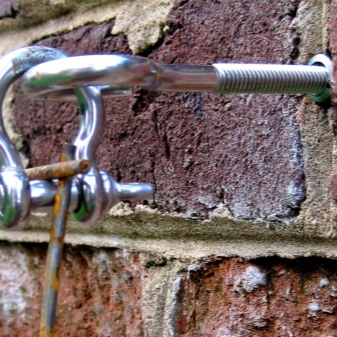
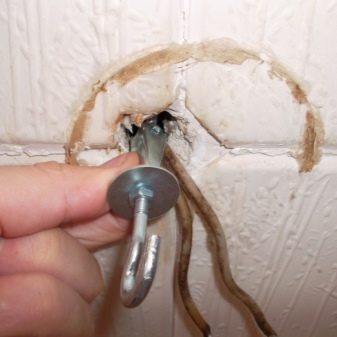
Views
The development of anchor fasteners has led to the emergence of several varieties of it. With a countersunk head for a Phillips screwdriver, they are usually used for mounting frame structures. With a nut at the end, it can be used for fastening objects and equipment with mounting holes. For heavy equipment, bolt head anchors are often used.
An anchor bolt with a ring can be either reinforced or bent. A slightly shorter ring forms a hook. The hook anchor is indispensable if you have to not only fix the object, but also mount and dismantle it. A kind of development of the hook was a simple bend at the end of the hairpin. Such an L-shaped anchor - a crutch - also has a wide range of applications. The working part is no less varied, the one that is fixed in the drilled hole.
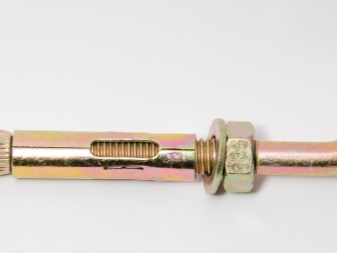
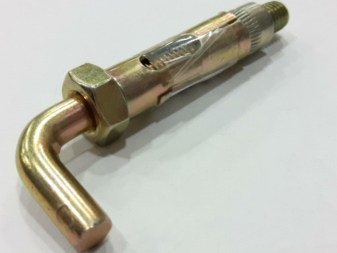
The most common expansion anchor bolt has already been described above, there is no need to repeat it. The original solution - the duplication of spacer sleeves - led to the development of a special design of the anchor, called two-spacer and even three-spacer. These fasteners can be successfully fixed even in porous material.
For reliable fixation, the spacer part can have a folding spring mechanism, not just expanding the fastener, but creating an emphasis on the inner side of the cover, for example, a plywood or other partition, for which other fasteners of adequate reliability simply cannot be used due to the characteristics of the material.
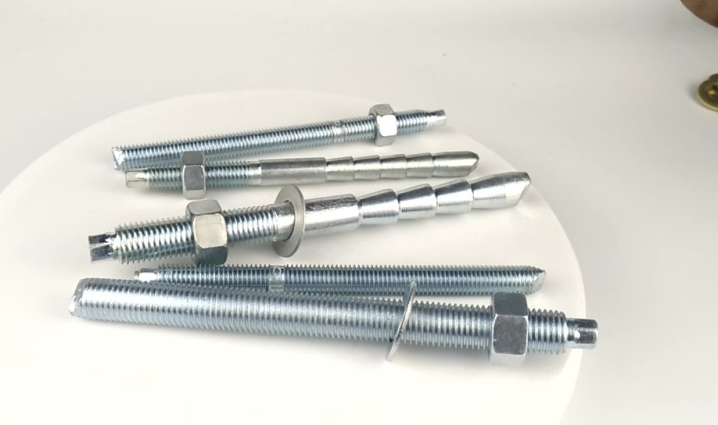
Materials (edit)
The material of the anchor can also be different:
- steel;
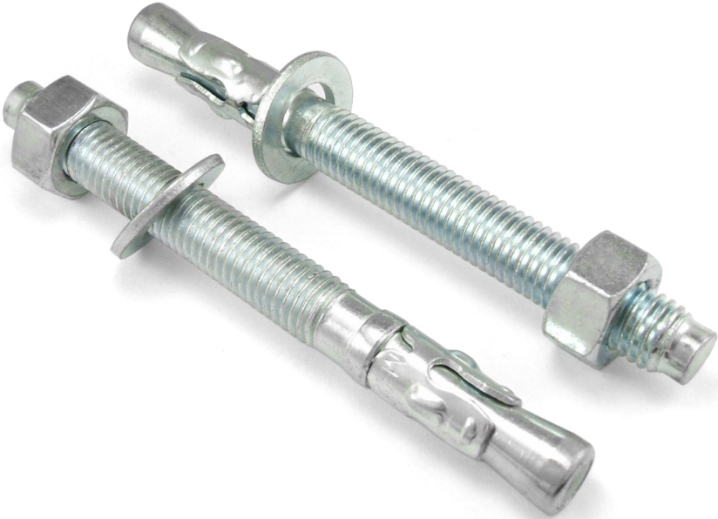
- Cink Steel;
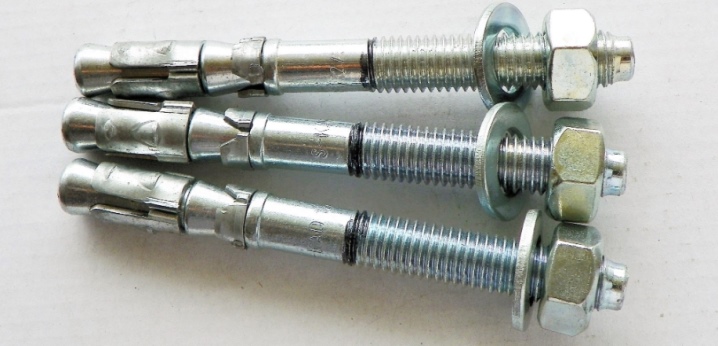
- stainless steel;
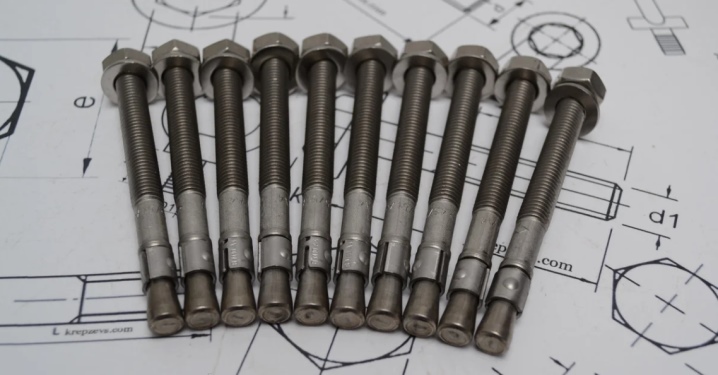
- brass.
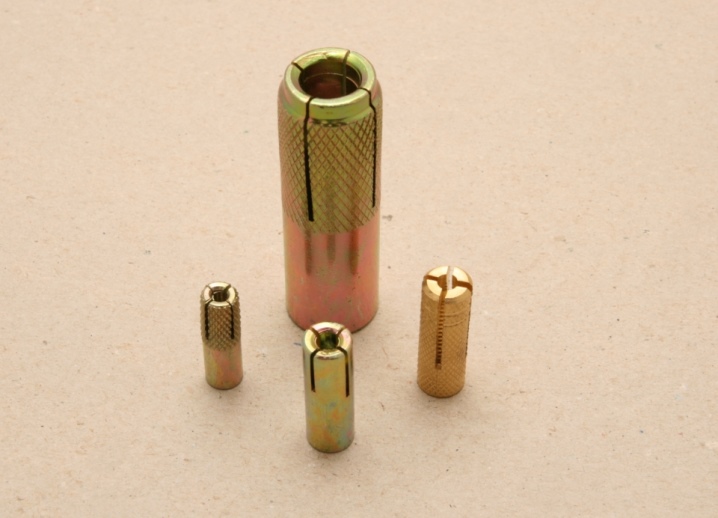
It is clear that each material has its own advantages and disadvantages. Steel fasteners with high strength cannot be used in aggressive environments, including high humidity. Galvanizing significantly extends the life of the steel fastener, but also increases its cost. Stainless steels of grades A1, A2 or A3, used for the manufacture of anchor bolts, do not corrode, have high strength, but are distinguished by high cost. Brass, despite not the best strength characteristics, can be used not only for fasteners in a humid environment, but also under water.
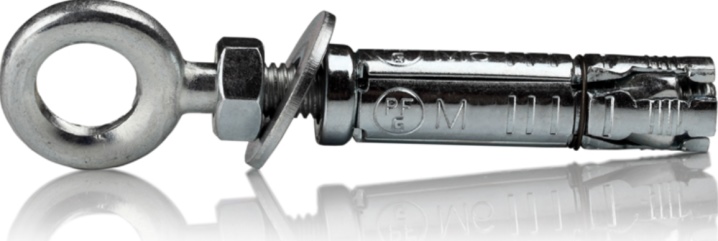
Dimensions (edit)
GOST dimensions (length and diameter) of anchor bolts do not exist, the alloys from which they are made are subject to mandatory standardization. but all manufacturers adhere to the regulations dictated by the technical conditions. And here it is already possible to distinguish a number of size groups that divided the fasteners first by diameter, and then by length.
The smallest size group is made up of anchors with a sleeve diameter of 8 mm, while the diameter of the threaded rod is smaller and, as a rule, is 6 mm.
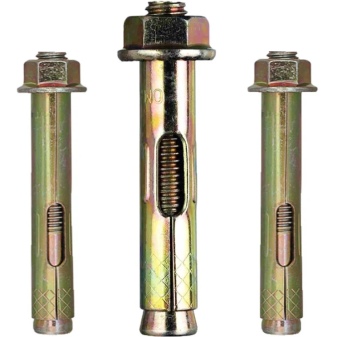
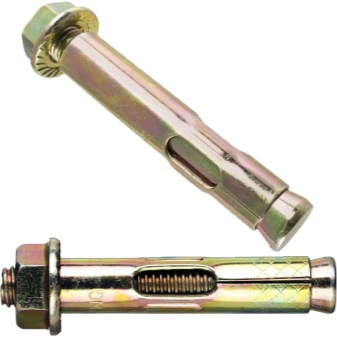
The smallest anchors-hooks and rings have very modest dimensions and corresponding strength: 8x45 or 8x60. Not all manufacturers produce such fasteners, since it is often successfully replaced by a plastic dowel with a self-tapping screw that has a ring or hook at the end.
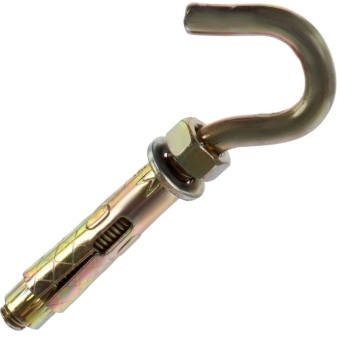
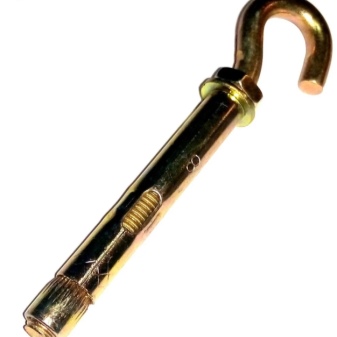
The size group of products with a diameter of 10 mm is somewhat more extensive: 10x60, 10x80,10x100. Stud thread is standardized with M8 bolt. On sale, such consumables can be found much more often than the previous group, since their field of application is much wider, manufacturers are more willing to produce just such anchors.
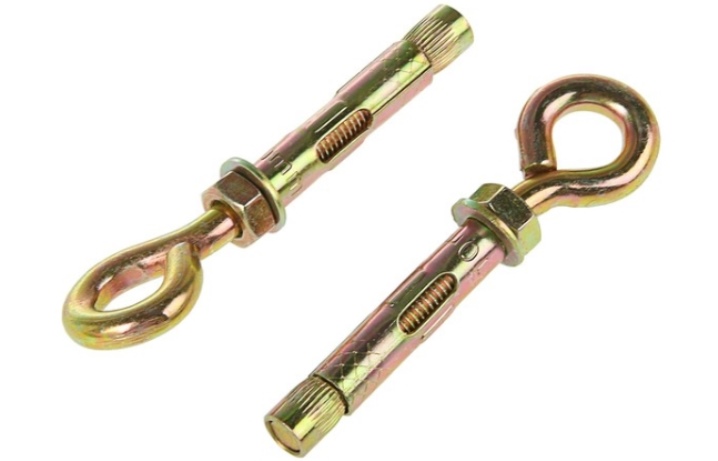
Anchor bolts with a diameter of 12 mm (12x100, 12x130, 12x150) and a diameter of a threaded rod M10 have practically no competitors at all. The unique fastening properties do not allow replacing them with plastic dowels. It is in this size group that double-expansion reinforced anchors can be presented.
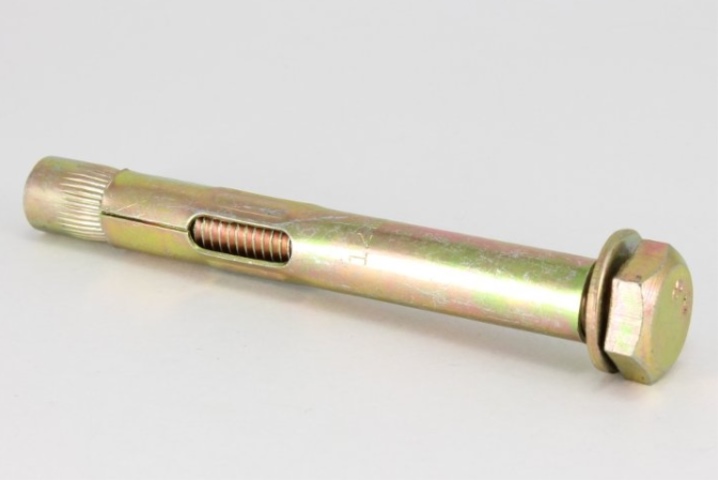
Real fixing "monsters" are anchors with stud diameters M12, M16 and more. Such giants are used for serious construction and installation work and are usually not used in everyday life, therefore they are very rarely presented in hardware stores. Even less often, you can find fasteners with a stud diameter M24 or, even more so, M38.
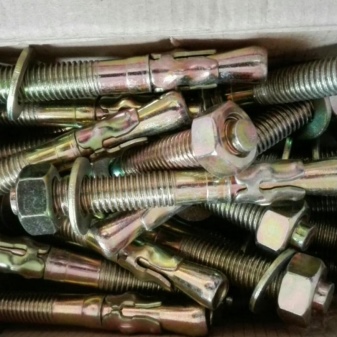
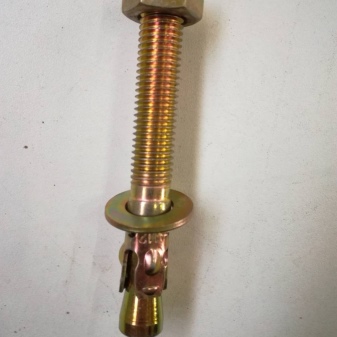
It is clear that the larger the diameter of the threaded rod, the more force has to be applied to wedge the spacer tabs of the sleeve.
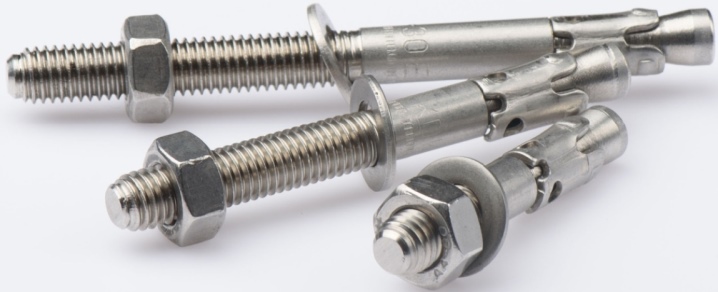
How to fix it?
In order to install anchor type fasteners, it does not matter, with a ring or a hook, you must do the following.
- After carefully determining the location (since it will no longer be possible to dismantle the fasteners), use a hammer drill or an impact drill to drill a hole corresponding to the outer diameter of the spacer sleeve.
- Remove fragments of material and other slag from the hole, the best result can be obtained using a vacuum cleaner.
- Insert an anchor bolt into the hole, possibly using a hammer.
- When the spacer part of the anchor is completely hidden in the material, you can start tightening the spacer nut - you can use pliers for this. If the anchor has a special nut under the ring or hook, it is better to use a wrench and tighten it. The fact that the fasteners are fully wedged can be judged by a sharp increase in the resistance of the screwed-in stud.
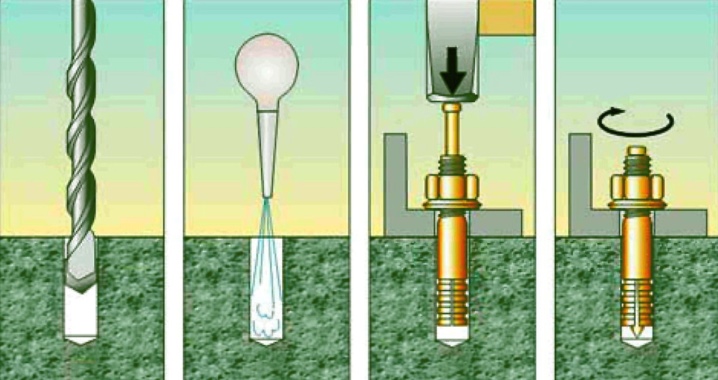
If the fasteners have been selected correctly in accordance with the material and the applied forces, they can serve indefinitely.
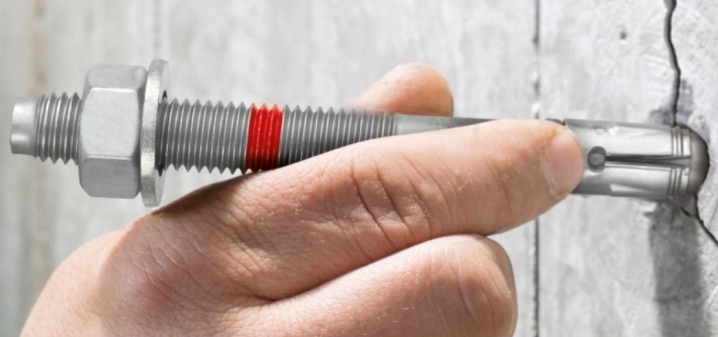
The following video talks about anchor bolts.













The comment was sent successfully.